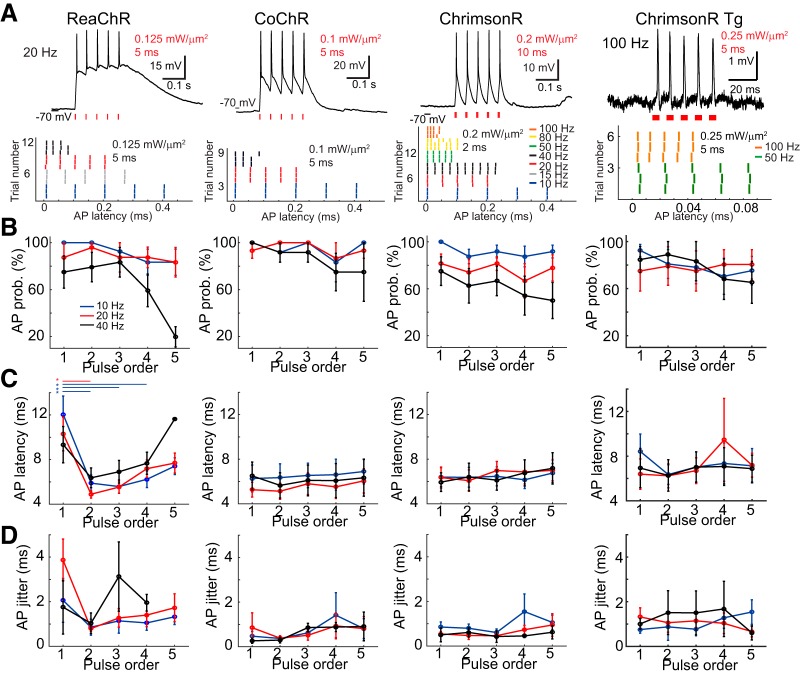Figure 3.
Precise generation of multiple APs with a train of patterned light pulses. A, Top, Representative whole-cell recordings of suprathreshold activation in vivo upon photostimulation of five illuminations at 20 Hz for ReaChR, CoChR, ChrimsonR, and cell-attached recordings of 100 Hz photostimulation for ChrimsonR Tg. Excitation intensity and light-pulse duration are indicated in red typeface. Bottom, Example raster plots of AP peak latencies relative to the onset of first light pulse from five or ten illuminations at different frequencies. Photostimulation condition indicated in black typeface. B–D, AP probability (AP prob.) AP latency, and jitter in relation to the pulse order of five illuminations at 10, 20, and 40 Hz for ReaChR, CoChR, ChrimsonR, and ChrimsonR Tg, respectively (mean ± SEM; n = 9, 8, 8 for ReaChR in response to 10, 20, 40 Hz photostimulation, n = 4, 5, 4 for CoChR, n = 8, 9, 8 for ChrimsonR, and n = 7, 6, 6 for ChrimsonR Tg). Note the significant decrease in AP latency and jitter upon the second stimulation for ReaChR. Asterisks denote significant difference for multiple comparison between pulse order.

